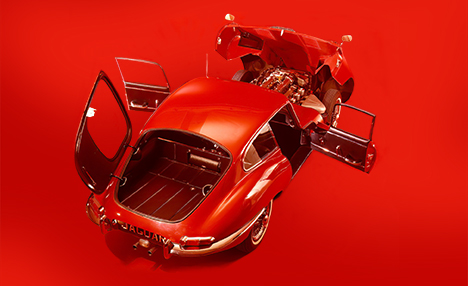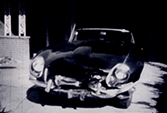
The Mini was a worldwide sensation—and still is. Credit for that success goes to BMC’s durable A-series engine and a very roomy interior.
For a car to be produced and sold for nearly half a century, it has to have a lot going for it. The Mini, first launched in 1959, is one of the most beloved cars ever made. During 41 years of production, 5.3 million Minis were sold worldwide. When BMW launched the all-new Mini Cooper in 2002, two years after production of the original ceased, it wisely kept the retro styling and aesthetics—why mess with a sure thing?
This small car offers big perceived benefits to enthusiasts—it’s a blast to drive, it has cachet, and it’s easily customized to make it as quirky and individual as the owner. Most of all, it makes everyone—from drivers to admirers on the street—smile. You can never underestimate the Happy Factor.
The Mini was revolutionary when launched due to its small, compact layout, transversely mounted engine and front-wheel-drive configuration. Within a decade, most other manufacturers followed suit. The original model offered both performance (a top speed of 70 mph) and frugality (50 mpg).
 Through the years, the Mini evolved with engineering innovations—at the end of production it sported fuel injection, catalytic converters and air bags. Performance-tuned Mini Coopers produced by John Cooper, a Formula 1 car builder, enjoyed great success in European Touring Car Championship racing and international rally competition. The Mini won the prestigious Monte Carlo rally in 1964, 1965 and 1967.
Through the years, the Mini evolved with engineering innovations—at the end of production it sported fuel injection, catalytic converters and air bags. Performance-tuned Mini Coopers produced by John Cooper, a Formula 1 car builder, enjoyed great success in European Touring Car Championship racing and international rally competition. The Mini won the prestigious Monte Carlo rally in 1964, 1965 and 1967.
The Mini also evolved in physical form with model variations ranging from vans to pickups and long-wheelbase estates. They evolved aesthetically with upscale factory models sporting an elegant front grille or modern front end. An Italian firm, Innocenti, built more luxurious versions under license from British Motor Cars. Virtually infinite ways to personalize the sweet mobile became available, from “Mini Mad” embroidered floor mats to Union Jack flags for the roof.
In America, about 15,000 Minis were imported and sold by the factory from 1959 through 1967. Changing safety and emission standards enacted for the 1968 model year ended the car’s American run.
But demand remained strong, and it is safe to say that there are more Minis stateside today than were ever imported by the factory. This popularity was further fueled by the introduction of BMW’s Mini Cooper in 2002, as new enthusiasts were drawn to own an authentic model.
All this renewed passion for the Mini is great for the brand, collectors, car clubs and vintage racers. It enhances resale value, fosters the demand for parts, encourages the sharing of expertise, and generates closer bonds within the owner community.
However, the demand, availability of parts and ease of making changes to the car can create other problems for owners. Private dealers and individuals have unofficially imported cars to the U.S. for years, and some have illegally swapped VIN plates and altered the year of manufacture on the paperwork so the car would appear to comply with U.S. Customs, DOT standards and EPA laws.
To determine the exact build year, you might have to do a detailed inspection and compare findings against model specifications. If you see an early model-year car with 12-inch wheels, wind-up windows and fuel injection, be prepared for even more scrutiny of the car and paperwork. On the next page, we’ll walk you through the car’s history and major model changes over the years to get you on the path to the whole Mini model truth.
A Mini History of the Mini
British Motor Cars conceived the Mini as a response to the popularity of the Volkswagen Beetle and as a reaction to the 1956 Suez Canal fuel crisis. The Mini debuted in 1959 as an economical, entry-level car. It was initially marketed as the Austin Seven and Morris Mini Minor, and was quickly renamed as the Austin Mini and Morris Mini. The name was shortened to just Mini in 1969.
 The original 848cc engine produced just 37 horsepower. But with curb weight at 1400 pounds, it still propelled the Mini to a top speed of 70 mph. Its compact size saved space with an 80-inch wheelbase and little overhang, yet it could hold four adults plus luggage in the trunk. The fully independent suspension used rubber cones as both shock absorbers and springs, supplying go-kart-like handling. Fuel-starved Europe appreciated the 50-mpg fuel economy. It was an instant success.
The original 848cc engine produced just 37 horsepower. But with curb weight at 1400 pounds, it still propelled the Mini to a top speed of 70 mph. Its compact size saved space with an 80-inch wheelbase and little overhang, yet it could hold four adults plus luggage in the trunk. The fully independent suspension used rubber cones as both shock absorbers and springs, supplying go-kart-like handling. Fuel-starved Europe appreciated the 50-mpg fuel economy. It was an instant success.
The most notable features on models made from 1959 through 1967—now commonly called the Mk I Mini—are external door hinges, sliding front side windows and 10-inch-diameter wheels.
Clearly the engineers started having fun with the Mini as a platform for ideas, and soon they were introducing model upgrades and variations. A van joined the lineup in 1960 and a pickup the following year. The Riley Elf and Wolseley Hornet models debuted in 1961 as up-market versions with more stately grilles, refined rear trunk treatment and upgraded interiors.
The first performance-tuned Mini was developed not by the factory, but by Formula 1 sensation John Cooper. The Mini Cooper was introduced in 1961 with a comprehensive set of engine, drivetrain, exhaust and suspension changes. A 997cc engine producing 55 horsepower gave it go, which evolved to a better 998cc version. To accommodate racing class considerations, the 1963 Mini Cooper S carried a 1071cc engine, and the 1964 model had 970cc and 1275cc engine options. The Mini four-wheel-drum brakes were replaced with front disc brakes—7-inch rotors on the Cooper and 7.5-inch rotors on the Cooper S.
With the success of the Coopers, the factory put a 55-horsepower, 998cc engine into the Hornet in 1962, and on Austin and Morris Minis in 1964. The original rubber cone suspension was replaced in 1964 with a hydrolastic system that used assemblies containing pressurized hydraulic fluid.
What is now known as the Mk II version of the Mini was built from 1967 to 1969. It featured a larger rear window, bigger tail lights and a redesigned front grille. It was produced with 848cc, 998cc and 1275cc engines.
The Mk III was released in 1969 with roll-up windows, larger doors with internal hinges and the original rubber cone suspension system to cut costs. In 1973, an alternator replaced the generator in an upgraded electrical system, and a rod-change transmission replaced the “magic wand” gear stick.
 The Mk IV, released in 1976, used rubber mounts for the front subframe to reduce road noise. A Verto clutch became standard in 1980. A shift to 12-inch wheels and 8.4-inch front disc brakes marked the Mk V release in 1984. The 1275cc engine became standard equipment on the Mk VI, starting in 1991. Single-point fuel injection replaced the single SU carburetor in 1994, and then was replaced by multi-point injection in 1996. An alarm system and catalytic converters were also added.
The Mk IV, released in 1976, used rubber mounts for the front subframe to reduce road noise. A Verto clutch became standard in 1980. A shift to 12-inch wheels and 8.4-inch front disc brakes marked the Mk V release in 1984. The 1275cc engine became standard equipment on the Mk VI, starting in 1991. Single-point fuel injection replaced the single SU carburetor in 1994, and then was replaced by multi-point injection in 1996. An alarm system and catalytic converters were also added.
The last Mini rolled off the line in October 2000. During its last days, the car was sold by BMW under the Rover nameplate. BMW launched the all-new Mini in 2002 with Cooper and Cooper S models, paying homage to the car’s heritage and quirky styling, yet giving it the performance muscle that made enthusiasts take notice. While purists don’t consider the new Mini a real Mini, it deserves praise for helping to increase the value of the originals.
Insider’s Info:
• There are more Minis in the U.S. now than ever, so there’s no reason to buy the first car you find. Take the time to locate the right one.
• All Minis rust, especially around the A-panels, floors, windshield frame, roof corners, door jams and headlight surrounds. In fact, vigilantly check the entire car.
• Don’t disregard the 10-inch-wheel models. Many enthusiasts say these cars offer a better ride than the later 12- and 13-inch models.
• Some Minis that couldn’t pass England’s MOT safety and emission inspection were sent Stateside. Watch for cars with skeletons in the trunk.
• Not all Minis came from England. Cars were also built in Italy, Australia, New Zealand, South Africa, Spain, Chile and other countries around the globe.
• Right- and left-hand drive cars are available in the States. Your decision: novelty or practicality?
• Despite the fact that Minis haven’t been officially imported to the U.S. for more than 40 years, quality replacement parts, as well as performance and aesthetic upgrade bits, are readily available.
• Prices have been on the rise lately. Decent Minis go for about $10,000, while pristine Cooper S models have been topping out at $25,000.
• There are many Mini model variants, including pickups, vans, wagons and the Jeep-like Moke. They carry standard Mini mechanicals.
• Despite the diminutive size, a Mini will easily carry two full-size adults. The back seat is quite roomy, too.
By Kathleen M. Mangan







'The Big Impact of the Mini' has no comments
Be the first to comment this post!